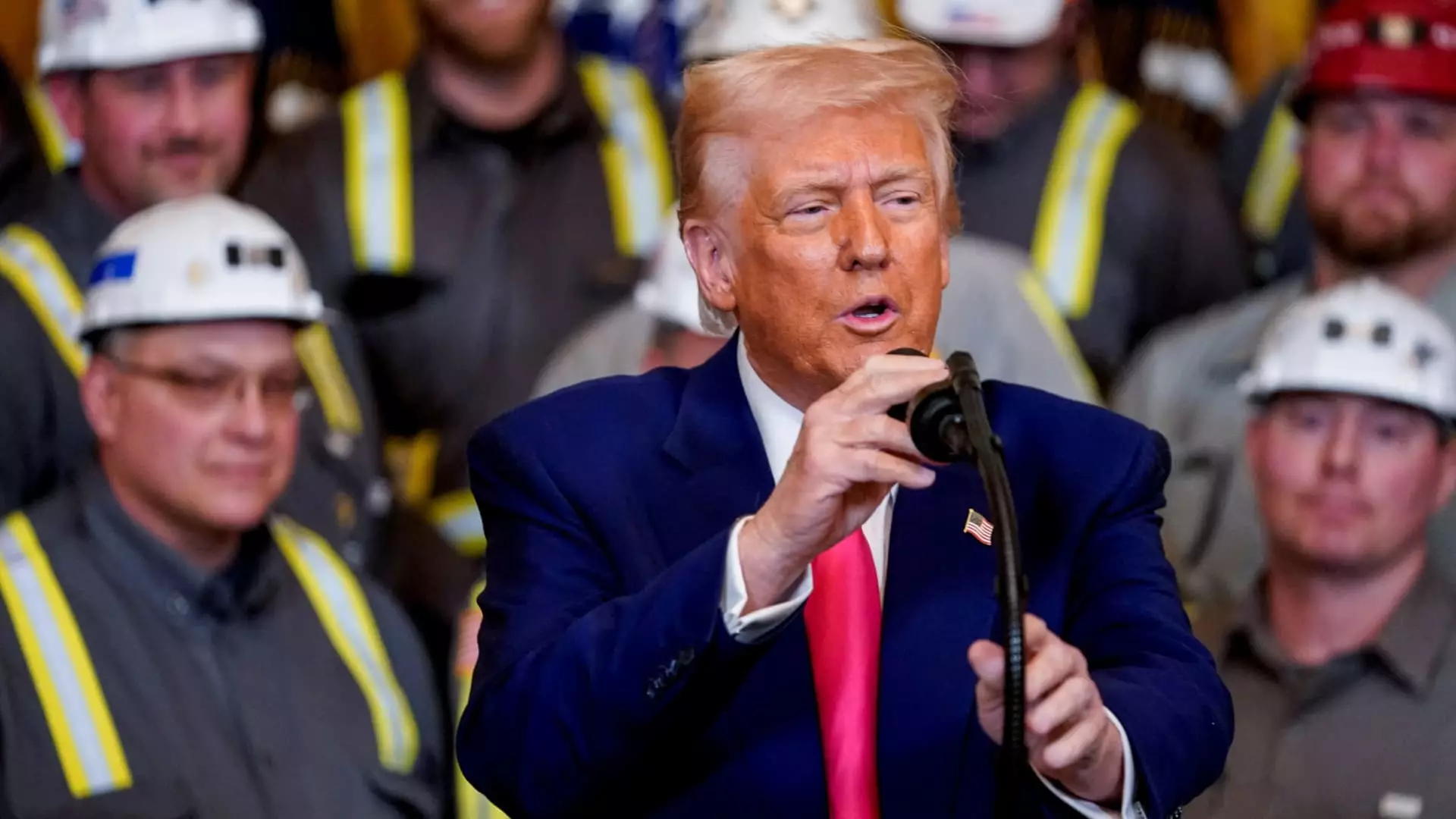The increasing demand for energy, particularly from the burgeoning tech industry, has led to a complex clash between the desires for economic revival and environmental conservation. One of the most contentious battlegrounds in this struggle is the coal industry, a sector that, despite being critically hampered by market forces and environmental concerns, has found a champion in former President Donald Trump. His executive order in April signaled a push to reconnect the United States’ power grid to coal as a means of fueling data centers for artificial intelligence. However, this misguided venture raises serious doubts about its potential economic viability and its impact on environmental health.
The Fallacy of Coal as a Clean Energy Source
Despite Trump’s promises of “good, clean coal,” the data indicates otherwise. Coal remains one of the dirtiest energy sources available, emitting more carbon dioxide per kilowatt hour than any other fossil fuel except oil. In an era where the consequences of climate change are becoming increasingly evident, the prioritization of coal, even as a backup power source, reflects a profound misunderstanding of the long-term needs of both the economy and the environment. The transition to renewable energy has become a necessity, not just a preference. Investing further in coal could potentially lock America into decades of outdated technology when the future lies in cleaner, sustainable solutions.
Misaligned Incentives with Big Tech
Though Trump’s initiative attempts to forge an alliance between coal and the tech industry, there is a marked discrepancy between the two. Big Tech companies have poured billions into renewable energy projects, fueled by corporate responsibility and a public demand for climate-friendly practices. With the imminent rise in electricity demand spurred by AI, it’s perplexing that the solution proposed aligns more closely with the past than with the future. Kevin Miller from Amazon highlighted this all-inclusive approach, but it was notable that he and other tech executives pointedly avoided committing to any long-term agreements with coal. The reluctance is telling: tech companies understand that investing in coal could jeopardize their sustainability goals.
The Irony of Economic Revival through Declining Industries
Trump’s coalition with coal miners appears as a lifeline to an industry in decline. From providing 51% of U.S. electricity generation in 2001 to just a mere 16% in 2023, coal’s trajectory indicates that reliance on this resource is both risky and short-sighted. Existing coal plants may offer temporary relief in meeting energy demands, but re-investing in an industry with such a downward trajectory can only serve as a stop-gap measure. Instead of funneling resources into coal, investments could be directed toward innovative technologies that would pave the way for future generations. Prolonging the life of coal-powered plants may create a temporary economic boost, but it undermines long-term progress and adaptability.
Politically Motivated Decisions and Their Consequences
Coal’s revival can be seen as a “dog whistle” aimed at Trump’s supporters and the coal-producing states, yet this move disregards broader economic and environmental consequences. Discussions surrounding the energy demands of AI must acknowledge that climate change knows no political boundaries. Coal miners and their communities deserve thoughtful strategies for economic transition, rather than a destructive nostalgia for a declining industry. The pushback from tech companies regarding coal use suggests a significant risk: policies crafted for political gain can ultimately stymie innovation and growth across sectors.
Future-Proofing Energy Strategy
The American power grid and its related infrastructure face an urgent need for modernization and diversification. The grid’s projected 40% increase in electricity demand by 2039 emphasizes the necessity of balanced and forward-thinking resource allocation. Keeping existing coal plants operational could hinder the transition to natural gas and renewables, which have already proven essential in reducing the power sector’s emissions. Experts indicate that a staggering 60% of emissions reductions achieved over the past two decades stemmed from natural gas replacing coal. Opting for coal jeopardizes the remarkable strides we’ve made toward cleaner energy sources.
As we venture further into the 21st century, the decisions we make today carry profound implications for the economy and the environment. While the allure of coal may resonate with some as a nostalgic solution, it is critical to look beyond the romanticism of fossil fuels and recognize that the future demands a commitment to sustainability and innovation. It is time to embrace cleaner alternatives and rethink our energy strategy by fostering the growth of renewables and nuclear energy, rather than clinging to an industry whose days are numbered.

